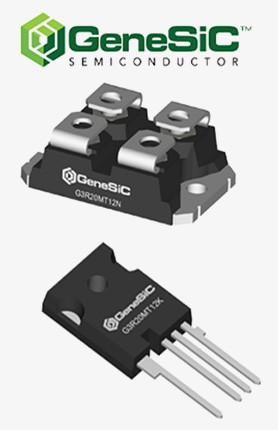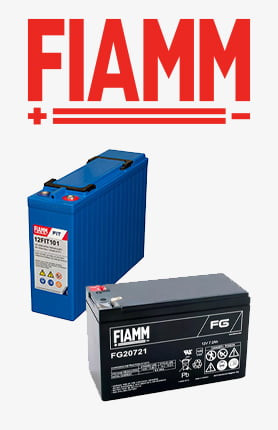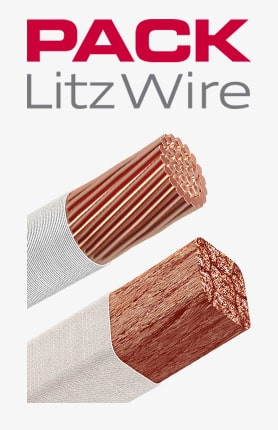-
BackX
-
Components
-
-
Category
-
Semiconductors
- Diodes
- Thyristors
-
Electro-insulated Modules
- Electro-insulated Modules | VISHAY (IR)
- Electro-insulated Modules | INFINEON (EUPEC)
- Electro-insulated Modules | Semikron
- Electro-insulated Modules | POWEREX
- Electro-insulated Modules | IXYS
- Electro-insulated Modules | POSEICO
- Electro-insulated Modules | ABB
- Electro-insulated Modules | TECHSEM
- Go to the subcategory
- Bridge Rectifiers
-
Transistors
- Transistors | GeneSiC
- SiC MOSFET Modules | Mitsubishi
- SiC MOSFET Modules | STARPOWER
- Module SiC MOSFET ABB’s
- IGBT Modules | MITSUBISHI
- Transistor Modules | MITSUBISHI
- MOSFET Modules | MITSUBISHI
- Transistor Modules | ABB
- IGBT Modules | POWEREX
- IGBT Modules | INFINEON (EUPEC)
- Silicon Carbide (SiC) semiconductor elements
- Go to the subcategory
- Gate Drivers
- Power Blocks
- Go to the subcategory
- Electrical Transducers
-
Passive components (capacitors, resistors, fuses, filters)
- Resistors
-
Fuses
- Miniature Fuses for electronic circuits - ABC & AGC Series
- Tubular Fast-acting Fuses
- Time-delay Fuse Links with GL/GG & AM characteristics
- Ultrafast Fuse Links
- Fast-acting Fuses (British & American standard)
- Fast-acting Fuses (European standard)
- Traction Fuses
- High-voltage Fuse Links
- Go to the subcategory
- Capacitors
- EMI Filters
- Supercapacitors
- Power surge protection
- TEMPEST emission revealing filters
- Surge arrester
- Go to the subcategory
-
Relays and Contactors
- Relays and Contactors - Theory
- 3-Phase AC Semiconductor Relays
- DC Semiconductor Relays
- Controllers, Control Systems and Accessories
- Soft Starters and Reversible Relays
- Electromechanical Relays
- Contactors
- Rotary Switches
-
Single-Phase AC Semiconductor Relays
- AC ONE PHASE RELAYS 1 series| D2425 | D2450
- One phase semiconductor AC relays CWA and CWD series
- One phase semiconductor AC relays CMRA and CMRD series
- One phase semiconductor AC relays - PS series
- Double and quadruple semiconductor AC relays - D24 D, TD24 Q, H12D48 D series
- One phase semiconductor relays - gn series
- Ckr series single phase solid state relays
- One phase AC semiconductor relays for DIN bus - ERDA I ERAA series
- 150A AC single phase relays
- Rail Mountable Solid State Relays With Integrated Heat Sink - ENDA, ERDA1 / ERAA1 series
- Go to the subcategory
- Single-Phase AC Semiconductor Relays for PCBs
- Interface Relays
- Go to the subcategory
- Cores and Other Inductive Components
- Heatsinks, Varistors, Thermal Protection
- Fans
- Air Conditioning, Accessories for Electrical Cabinets, Coolers
-
Batteries, Chargers, Buffer Power Supplies and Inverters
- Batteries, Chargers - Theoretical Description
- Modular Li-ion Battery Building Blocks, Custom Batteries, BMS
- Batteries
- Battery Chargers and Accessories
- Uninterruptible Power Supply and Buffer Power Supplies
- Inverters and Photovoltaic Equipments
- Energy storage
- Fuel cells
- Lithium-ion batteries
- Go to the subcategory
-
Automatics
- Spiralift Lifts
- Futaba Drone Parts
- Limit Switches, Microswitches
- Sensors, Transducers
-
Infrared Thermometers (Pyrometers)
- IR-TE Series - Water-proof Palm-sized Radiation Thermometer
- IR-TA Series - Handheld Type Radiation Thermometer
- IR-H Series - Handheld Type Radiation Thermometer
- IR-BA Series - High-speed Compact Radiation Thermometer
- IR-FA Series - Fiber Optic Radiation Thermometer
- IR-BZ Series - Compact Infrared Thermometers
- Go to the subcategory
- Counters, Time Relays, Panel Meters
- Industrial Protection Devices
- Light and Sound Signalling
- Thermographic Camera
- LED Displays
- Control Equipments
- Go to the subcategory
-
Cables, Litz wires, Conduits, Flexible connections
- Wires
- Cable feedthroughs and couplers
- Litz wires
-
Cables for extreme applications
- Extension and Compensation cables
- Thermocouple cables
- Connection cables for PT sensors
- Multi-conductor wires (temp. -60C to +1400C)
- Medium voltage cables
- Ignition wires
- Heating cables
- Single conductor cables (temp. -60C to +450C)
- Railway cables
- Heating cables Ex
- Cables for the defense industry
- Go to the subcategory
- Sleevings
-
Braids
- Flat Braids
- Round Braids
- Very Flexible Flat Braids
- Very Flexible Round Braids
- Cylindrical Cooper Braids
- Cylindrical Cooper Braids and Sleevings
- Flexible Earthing Connections
- PCV Insulated Copper Braids (temp. up to 85C)
- Flat Aluminium Braids
- Junction Set - Braids and Tubes
- Steel Braids
- Go to the subcategory
- Traction Equipment
- Cable Terminals
- Flexible Insulated Busbars
- Flexible Multilayer Busbars
- Cable Duct Systems
- Go to the subcategory
- View all categories
-
Semiconductors
-
-
- Suppliers
-
Applications
- CNC Machine Tools
- DC and AC Drives (Inverters)
- Energetics
- Energy bank
- Equipment and Components for Hazardous Areas [Ex]
- Equipment for Distribution, Control and Telecommunications Cabinets
- HVAC Automation
- Induction Heating
- Industrial Automation
- Industrial Protective Devices
- Machines for Drying and Wood Processing
- Machines for Thermoforming Plastics
- Mining, Metallurgy and Foundry
- Motors and Transformers
- Power Supplies (UPS) and Rectifier Systems
- Printing
- Temperature Measurement and Regulation
- Test and Laboratory Measurements
- Tram and Railway Traction
- Welding Machines
-
Assembly
-
-
Inductors
-
-
Induction devices
-
-
Service
-
- Contact
- Zobacz wszystkie kategorie
Gel muffs
Gel Cable Joints: Hermetic Protection for Cable Connections
Key to Reliability in Harsh Conditions
Gel cable joints are modern and reliable electro-installation accessories that constitute a hermetic protective barrier for cable connections. They are essential wherever...
Gel Cable Joints: Hermetic Protection for Cable Connections
Key to Reliability in Harsh Conditions
Gel...
| Image | View the product | No. Manufacturer | ||||
|---|---|---|---|---|---|---|
| -- |
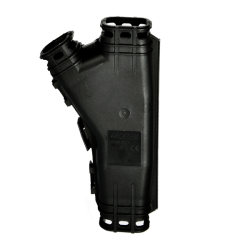
|
MOREK | BREAK50Y (180x105x36mm) Gel sleeve IP68 MBG0050Y24 | SEE IT | MBG0050Y24 | On Order |
| -- |
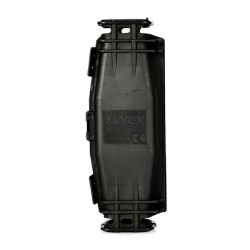
|
MOREK | BREAK50 (165x62x36mm) Gel sleeve IP68 MBG0050A24 | SEE IT | MBG0050A24 | On Order |
| -- |
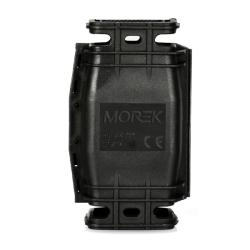
|
MOREK | BREAK30 (100x59x34mm) Gel sleeve IP68 MBG0030A24 | SEE IT | MBG0030A24 | On Order |
| -- |
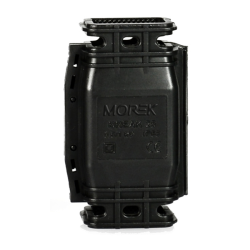
|
MOREK | BREAK25 (70x42x24mm) Gel sleeve IP68 MBG0025A24 | SEE IT | MBG0025A24 | On Order |
| -- |
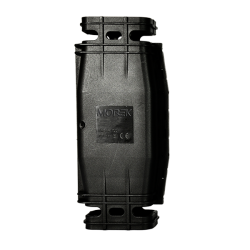
|
MOREK | BREAK100 (220x100x50) Gel sleeve IP68 MBG0100A24 | SEE IT | MBG0100A24 | On Order |
Gel Cable Joints: Hermetic Protection for Cable Connections
Key to Reliability in Harsh Conditions
Gel cable joints are modern and reliable electro-installation accessories that constitute a hermetic protective barrier for cable connections. They are essential wherever electrical connections are exposed to harmful external factors: moisture, water, dust, dirt, or chemical substances. Primarily used in low-voltage networks, they guarantee long-term and failure-free operation of electrical systems in industrial and domestic installations, indoors, outdoors, and underground.
Construction and Principle of Operation
A gel cable joint is a ready-to-use kit, usually consisting of a durable, two-part housing (shell) made of plastic (e.g., halogen-free PP) and a filling in the form of an elastic, non-toxic silicone gel (e.g., two-component RELICON gel). After placing the connected conductors inside the housing and closing it, the plastic gel surrounds the connection, ensuring:
- Excellent electrical insulation.
- Sealing at IP67 or IP68 level (resistance to dust and submersion in water, often up to a depth of 1 meter or more).
- Mechanical protection and resistance to vibrations.
Many modern joints are already equipped with integrated cable connectors, which further shortens the installation time.
Speed and Simplicity of Installation without Specialized Tools
One of the biggest advantages of gel cable joints, unlike traditional resin joints, is the speed and simplicity of installation. A gel cable joint is a ready-to-use product that eliminates the time-consuming mixing of resin and waiting for it to cure. Installation often takes place without the use of specialized tools – simple "hand-work" is sufficient. In the case of joints with PUSH IN technology, installation is even faster and more reliable, as the connection is resistant to vibrations and does not require periodic tightening checks. This translates into savings in the installer's working time, even by 60-80% compared to other methods.
Application of Gel Cable Joints
Thanks to their unique properties, gel cable joints find wide application:
- Outdoor and underground installations: For connecting and repairing power cables in gardens, parking lots, outdoor lighting systems (including LED), which are exposed to rain and continuous flooding.
- Underwater installations: In cable ducts, manholes, and even in continuous submersion (depending on the IP rating).
- Cable sheath repair: As a quick repair connector for damaged cable insulation.
- Connections in areas exposed to vibrations: In automation and industry, where constant clamping force is crucial.
The silicone gel is plastic, and in some types of joints, the housing can be re-opened for visual inspection or changing the conductor configuration (although the joint itself cannot be reused for a new installation to ensure proper clamping).

